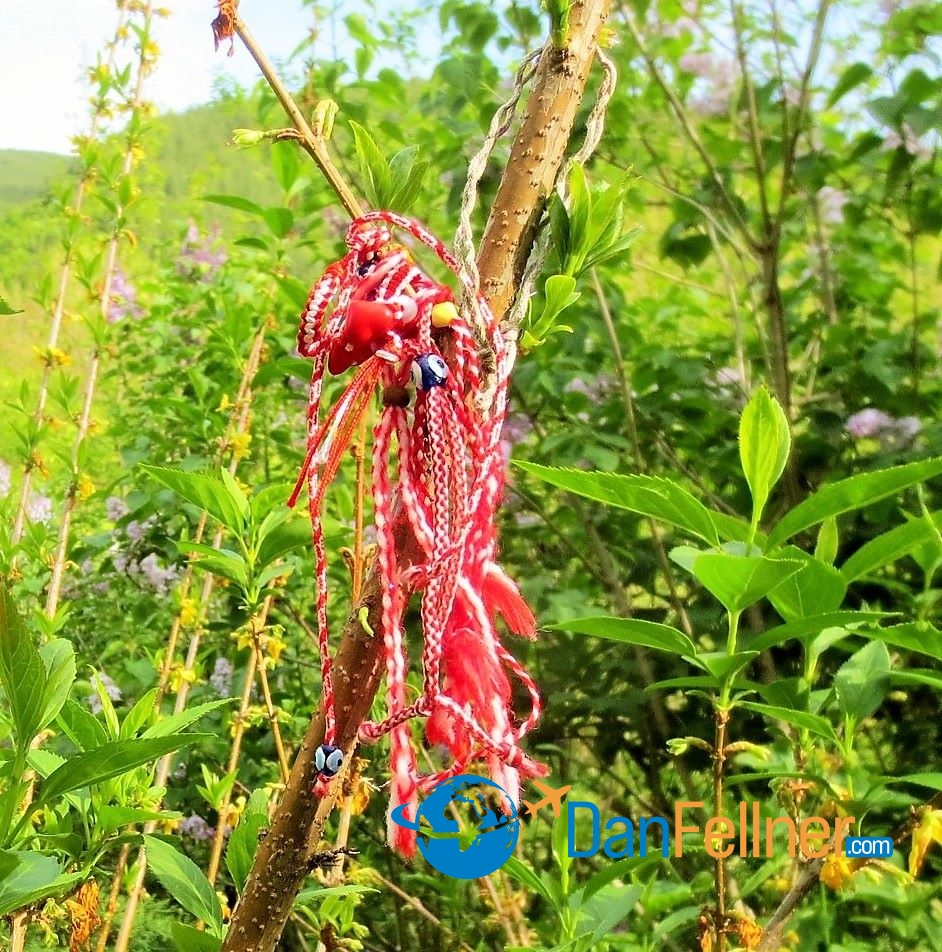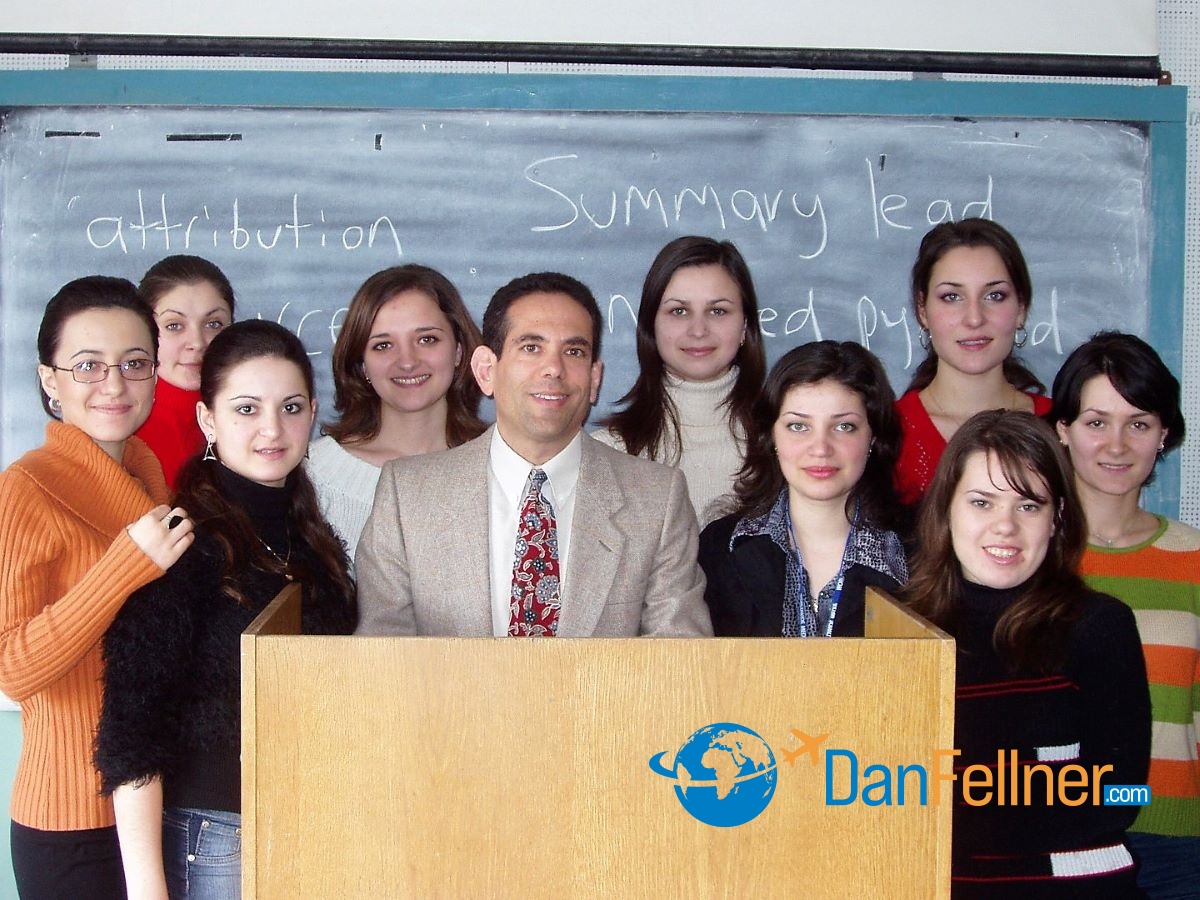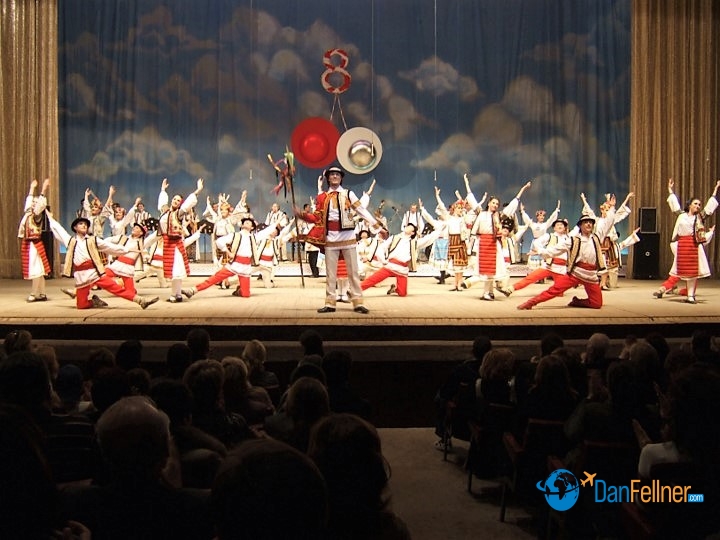Mărțișor marks the rebirth of life after hard winter
The Arizona Republic – March 16, 2006
CHISINAU, Moldova – Spring officially arrived on March 1 with the beginning of a 10-day festival called Martisor. It’s a tradition dating hundreds of years in which Moldovans celebrate the rebirth of life after a hard winter.

A Mărțișor performance at the National Palace Theater in Chisinau, Moldova.
There were several inches of snow on the ground and it sure didn’t feel like spring. But my students at Moldova State University helped get me into the spirit of the coming season.
As I entered the classroom, they lined up to pin special Martisor ornaments onto my sweater. These beautiful pins, made of red and white thread and shaped into flowers, are a Moldovan symbol of friendship and respect.

A student at Moldova State University pins a Mărțișor ornament onto the author’s sweater.
That night, I went to a performance commemorating the beginning of Martisor at the National Palace Theater. Along with Vladimir Voronin, the president of the country, and hundreds of other Moldovans, I witnessed a wonderful display of singing and dancing by performers wearing colorful traditional costumes.
The best seat in the house cost less than $8 and it was as entertaining a show as anything I’ve ever seen at Gammage.
Perhaps the most enjoyable aspect of living abroad is getting the chance to become engrossed in another culture and thoroughly learn about a part of the world so different from Arizona in so many ways.
Moldova is a poor country, yet Moldovans are some of the most generous and welcoming people I have encountered. Each day when I arrive at the university, I am met at the school of journalism office with a warm greeting of buna ziua (good day) and a cup of hot tea.

It’s considered good luck to hang Mărțișor pins on tree branches.
Despite being warned that the students would sit in class stone-faced and silent – a common stereotype of Eastern Europeans – I am finding them to be energetic, responsive and participative. Class discussions are as lively as back home.
My courses are conducted in English, which is a bit of a struggle for some of the students, but everyone is able to speak the language well enough to get by.
I’m not exactly sure why, but journalism students in most Eastern European countries tend to be overwhelmingly female, and that’s also the case in Moldova.
In fact, all of my students in both classes I’m teaching are female.

The author with his journalism class at Moldova State University.
Many of them are working as journalists at major media outlets in the country. Moldova, which has been an independent country for 15 years, is still building a free press and there are opportunities for young people to enter the field and get meaningful on-the-job experience while still completing their studies.
Only one of my students has been to the United States and most of them have had very little direct contact with Americans.
I try to allot a few minutes at the end of each class for general questions about America.
They are teaching me Romanian words and about their country’s history and customs, including Martisor. I think I am learning as much from them as they are from me.
According to Martisor tradition, you’re supposed to wear the pins until the trees bloom, at which time you hang them on a branch for good luck.
But I’m going to break with tradition and keep my Martisor pins. They are a special memento of my students and spring in Moldova.




